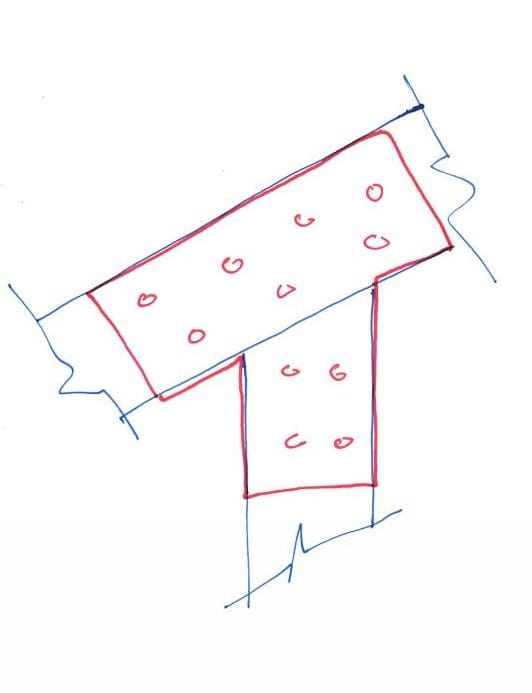I am attempting to design a moment connection for the top-chord-to-post connection for a timber truss (diagram attached). I realize that this is a connection best avoided; however, I am trying to accommodate the architect's vision. The design is inherently unstable if all connections are pinned, so I modeled it with fixed connections at the locations mentioned above. I've done a few other timber truss designs, but none as nasty as this one. I'm thinking of trying to use steel dowels epoxied into the members, but I'm having trouble finding design values (though I doubt I'll be able to develop the loads needed).
The connections I've considered so far-- straps, bolts, plates, etc.-- I don't believe will give me the needed fixity. I also realize that there will be further design considerations if the epoxied dowels are a viable option, such as moisture content, shrinkage, etc. Also, other geometry options would ruin the desired aesthetic... it would be so easy if I could push the bottom chord up a couple of feet...
Any ideas? Tips very much appreciated
(Experience: EIT, 1.5 yrs)
The connections I've considered so far-- straps, bolts, plates, etc.-- I don't believe will give me the needed fixity. I also realize that there will be further design considerations if the epoxied dowels are a viable option, such as moisture content, shrinkage, etc. Also, other geometry options would ruin the desired aesthetic... it would be so easy if I could push the bottom chord up a couple of feet...
Any ideas? Tips very much appreciated
(Experience: EIT, 1.5 yrs)

